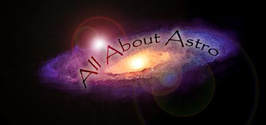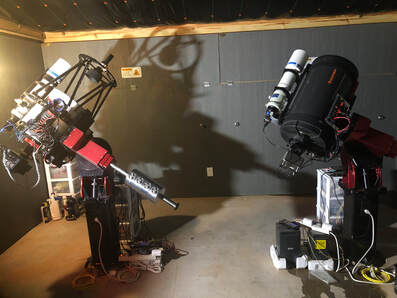
We have cool telescopes in the 3RF Conley Observatory. The setup on the left, which we call "Aries," contains two telescopes, both of which have been in my possession for over 15 years now. The small one is my Tak FSQ-106. Don't frown down on it because it has a fixed dew shield...it's a wonderful telescope and has produced hundreds of wonder images for me.
But the other scope on Aries is an old friend. I received this beautiful 12.5" RCOS Ritchey Chretien scope in 2004 and, despite it technically being owed by the Three Rivers Foundation (3RF), it's never NOT been my scope. I'm the only person who ever touched it, well, except for the RCOS people who maintenanced it back in 2010.
Speaking of which, this is the heart of the narrative...
After we closed its old ProDome observatory, we sent it back to RCOS to repair mouse-chewed wiring and for the usual recoat of the optics. At a cost of around $3500, knowing that my friend was "fixed," we stored the instrument away until we could prepare its future home. Little did I know that six years later when we built the Conley Observatory, the scope never was truly fixed.
My travails began when I remounted the scope and checked collimation. Surprisingly, the scope couldn't be collimated because my method no longer seemed to work - using a "Tak collimator" requires the sight of an annulus of light through the colimator, but something was wrong. The annulus was missing.
Thinking I might be missing a spacer in the optical train during collimation (I learned afterward that I wasn't), I went ahead and started imaging with it. Unfortunately, defocused images showed a severe intrusion into the light cone, which only got worse the farther I went off the optical axis. Nothing changed from the old setup - same SBIG STL-series camera, same spacers, same everything. And of course when I put the bigger FLI PL-16803 camera on it, the bigger chip just made the optical problems even worse. Below are equally in and out of focus images showing the issues.
But the other scope on Aries is an old friend. I received this beautiful 12.5" RCOS Ritchey Chretien scope in 2004 and, despite it technically being owed by the Three Rivers Foundation (3RF), it's never NOT been my scope. I'm the only person who ever touched it, well, except for the RCOS people who maintenanced it back in 2010.
Speaking of which, this is the heart of the narrative...
After we closed its old ProDome observatory, we sent it back to RCOS to repair mouse-chewed wiring and for the usual recoat of the optics. At a cost of around $3500, knowing that my friend was "fixed," we stored the instrument away until we could prepare its future home. Little did I know that six years later when we built the Conley Observatory, the scope never was truly fixed.
My travails began when I remounted the scope and checked collimation. Surprisingly, the scope couldn't be collimated because my method no longer seemed to work - using a "Tak collimator" requires the sight of an annulus of light through the colimator, but something was wrong. The annulus was missing.
Thinking I might be missing a spacer in the optical train during collimation (I learned afterward that I wasn't), I went ahead and started imaging with it. Unfortunately, defocused images showed a severe intrusion into the light cone, which only got worse the farther I went off the optical axis. Nothing changed from the old setup - same SBIG STL-series camera, same spacers, same everything. And of course when I put the bigger FLI PL-16803 camera on it, the bigger chip just made the optical problems even worse. Below are equally in and out of focus images showing the issues.
Call the manufacturer, right? Well, sure, only now, RCOS was out of business!
From there, months of troubleshooting began. I got great assistance from Rich Simons of Deep Sky Instuments (owners of RCOS assets). I had everybody on the old Yahoo User Group helping me out - awesome people! Of course all the advice was more about what I had to be missing, not anything truly wonky about the scope. I needed to be certain about the amount of back focus, check the mirror spacing, collimate using alternative methods.
Now I wouldn't put anything past me...I'm a reasonably intelligent guy, but I've been known to make mistakes. But after several YEARS of making trips to the observatory, which is 222 miles from my DFW home, I finally started narrowing it down to an issue with the baffles, with the thought that RCOS might have switched them when they worked on the scope. After all, I even had a measured drawing, one that showed a different looking secondary baffle than the one on my scope, but because it omitted the length measurements of both baffles, I didn't feel like I could trust it. But when you've exhausted every other possibilty, you realize that your suspicions might be right.
But second thoughts and doubts kept creeping back in my head.
"Why would RCOS do that? How?"
And the more I mentioned it to my online "advisors," I got the feeling that they were just shaking their head at me. After all, there's no way RCOS could have done that, right? It's beyond reasonable that they'd just outright switch them on me.
Exasperated, I threatened to pull out a hack-saw, because in my mind it couldn't get any worse!
And then, finally, I found an old picture of my scope, one that showed a close-up of the original secondary baffle. And sure enough, it was now different! This old friend of mine who has seen sub-arc second details and diffraction-limited performance had a secondary baffle transplant. This was the culprit, cutting into the light cone and causing crap performance (more than double the FWHM measures I used to get, at best).
From there, months of troubleshooting began. I got great assistance from Rich Simons of Deep Sky Instuments (owners of RCOS assets). I had everybody on the old Yahoo User Group helping me out - awesome people! Of course all the advice was more about what I had to be missing, not anything truly wonky about the scope. I needed to be certain about the amount of back focus, check the mirror spacing, collimate using alternative methods.
Now I wouldn't put anything past me...I'm a reasonably intelligent guy, but I've been known to make mistakes. But after several YEARS of making trips to the observatory, which is 222 miles from my DFW home, I finally started narrowing it down to an issue with the baffles, with the thought that RCOS might have switched them when they worked on the scope. After all, I even had a measured drawing, one that showed a different looking secondary baffle than the one on my scope, but because it omitted the length measurements of both baffles, I didn't feel like I could trust it. But when you've exhausted every other possibilty, you realize that your suspicions might be right.
But second thoughts and doubts kept creeping back in my head.
"Why would RCOS do that? How?"
And the more I mentioned it to my online "advisors," I got the feeling that they were just shaking their head at me. After all, there's no way RCOS could have done that, right? It's beyond reasonable that they'd just outright switch them on me.
Exasperated, I threatened to pull out a hack-saw, because in my mind it couldn't get any worse!
And then, finally, I found an old picture of my scope, one that showed a close-up of the original secondary baffle. And sure enough, it was now different! This old friend of mine who has seen sub-arc second details and diffraction-limited performance had a secondary baffle transplant. This was the culprit, cutting into the light cone and causing crap performance (more than double the FWHM measures I used to get, at best).
And it totally makes sense...It turns out that my scope was a 2004 model with a 2.5" long, straight secondary baffle. This one grew to 3.25" long, with a taper. Yep, RCOS changed their baffle design for the 2005 model year, and instead of replacing my old beautiful baffle, they switched it out. I don't know if they got mine mixed up, or whether they thought they'd "upgrade" mine. But why? Certainly they knew that to change the baffle you also have to lengthen the truss arms of the scope. My overall scope dimensions were unchanged.
So, yeah, I did it. I cut off the secondary baffle of a $21,000 telescope! No hacksaw...a Dremel and some sandpaper.
So, yeah, I did it. I cut off the secondary baffle of a $21,000 telescope! No hacksaw...a Dremel and some sandpaper.
What you see above is the result, now only 2.6" long. If you are worried about the accuracy, don't be. Grinding it down uniformly with sand paper and a digital caliper, my result is within 10 thousandths of length all the way around the baffle.
This was just enough to return (barely) the annulus of light in the collimator, but it's likely not enough to eliminate the intrusion into the light cone. But I figure it must be better. Once I know for sure, I'll likely have to keep working on it, taking off a bite or two each time I'm visiting the scope, sneaking up on the final length, but I'm thrilled with the result so far.
I finished the job above with some flat black paint, and once I finally get the optimal baffle length, I'll also flock the interior of the baffle with some felt.
So are the images better? Well, I don't know. The roll-off observatory roof decided to stop rolling the next night of clear sky. So I can't test the scope!
Have to fix the observatory roof now, and I hoping it doesn't take YEARS.
The astronomy gods hate me.
This was just enough to return (barely) the annulus of light in the collimator, but it's likely not enough to eliminate the intrusion into the light cone. But I figure it must be better. Once I know for sure, I'll likely have to keep working on it, taking off a bite or two each time I'm visiting the scope, sneaking up on the final length, but I'm thrilled with the result so far.
I finished the job above with some flat black paint, and once I finally get the optimal baffle length, I'll also flock the interior of the baffle with some felt.
So are the images better? Well, I don't know. The roll-off observatory roof decided to stop rolling the next night of clear sky. So I can't test the scope!
Have to fix the observatory roof now, and I hoping it doesn't take YEARS.
The astronomy gods hate me.
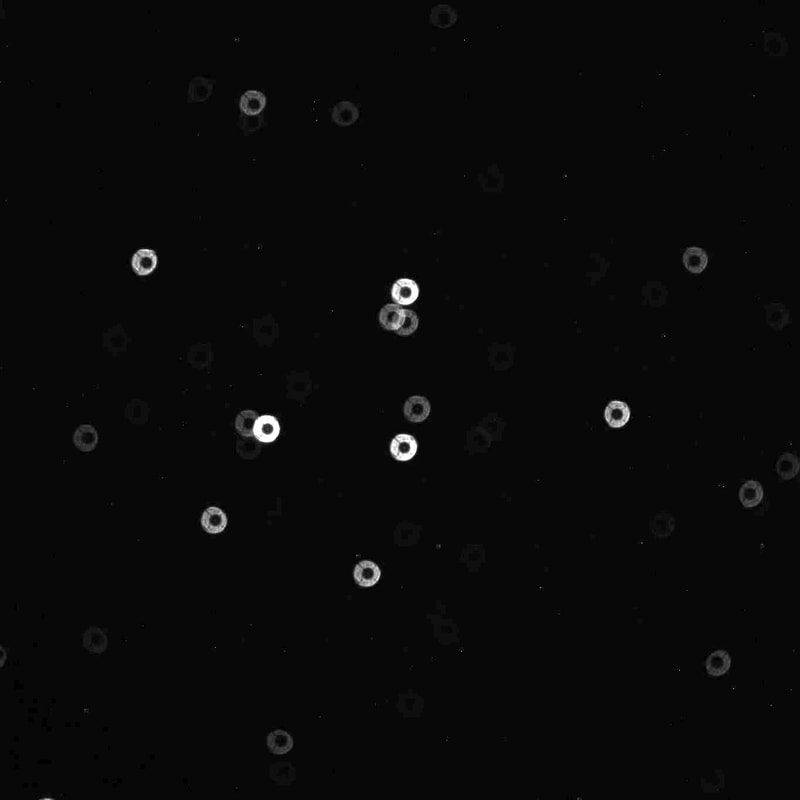
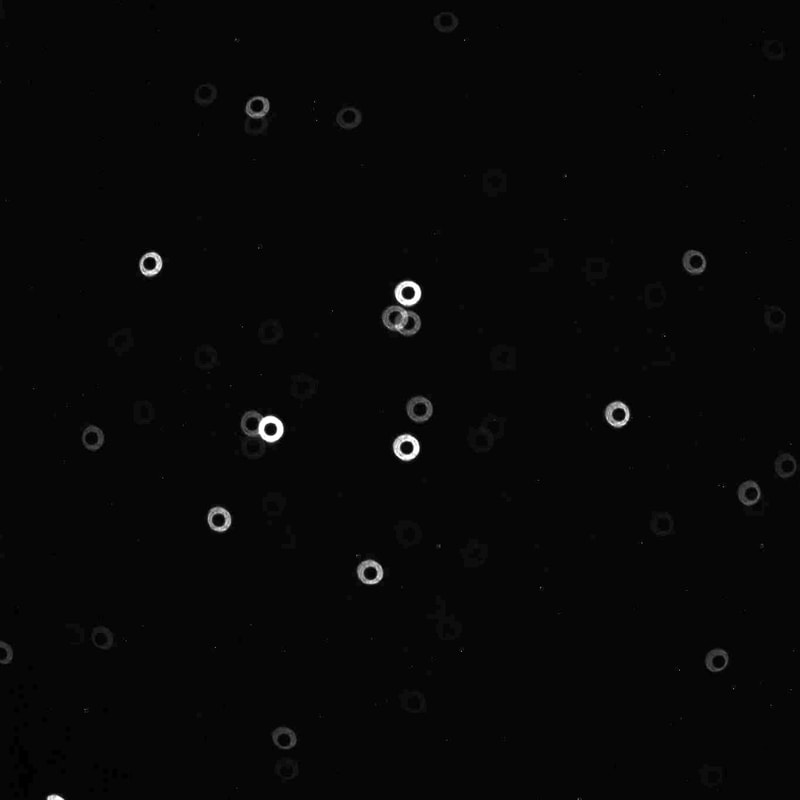
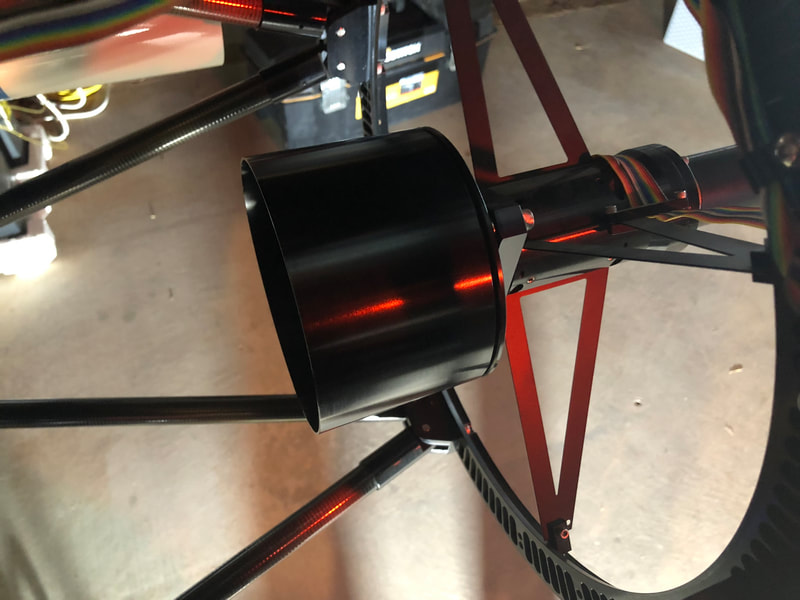
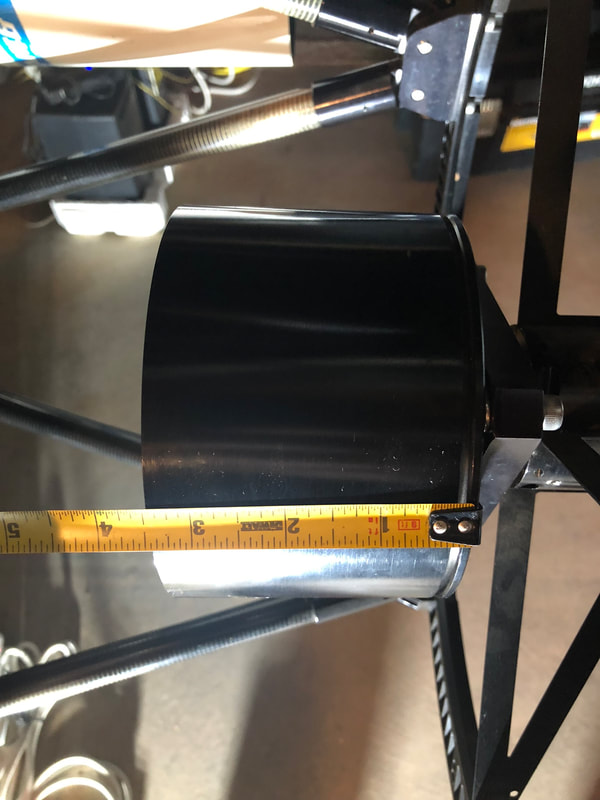
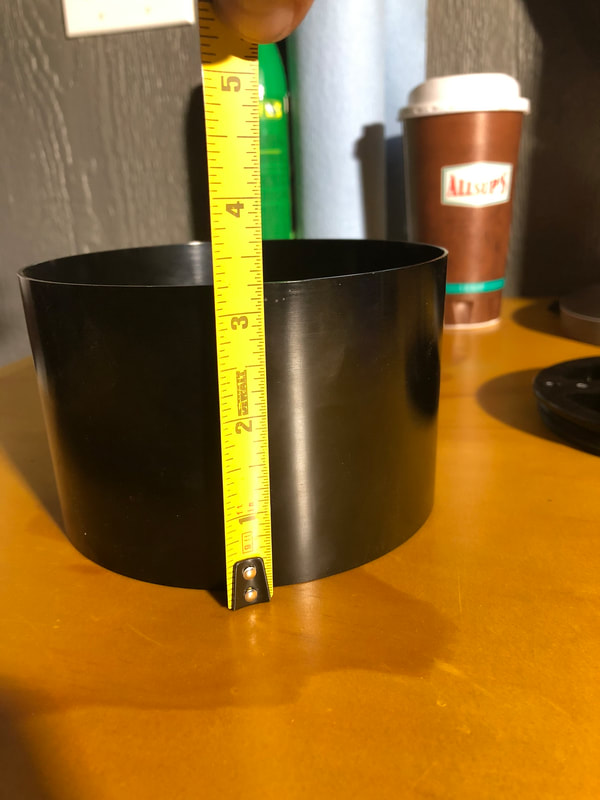
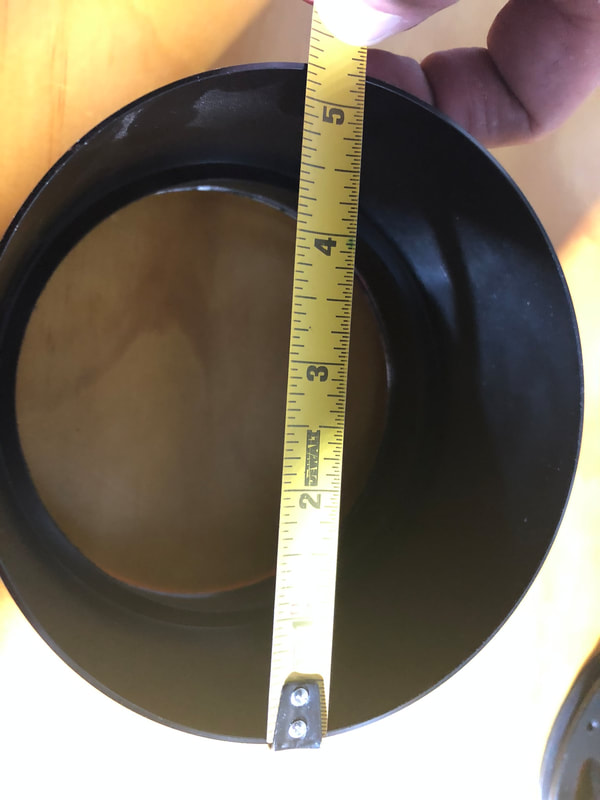
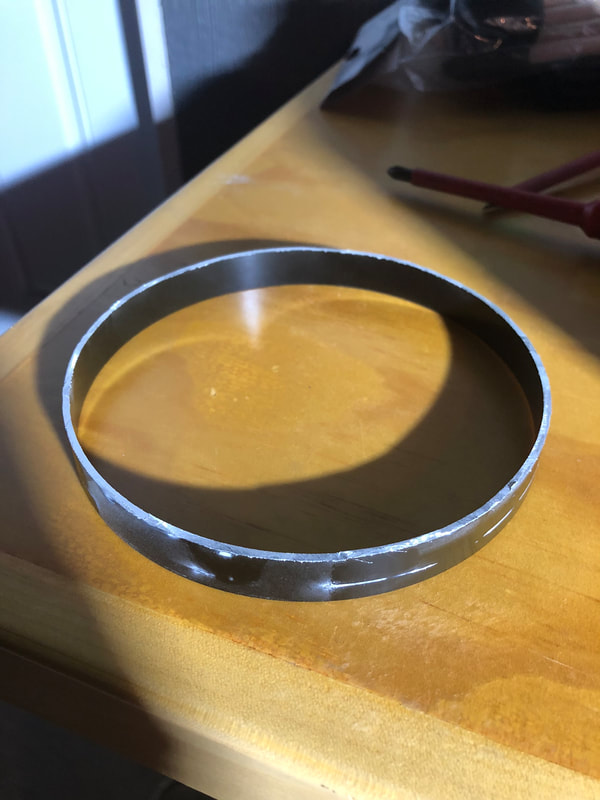
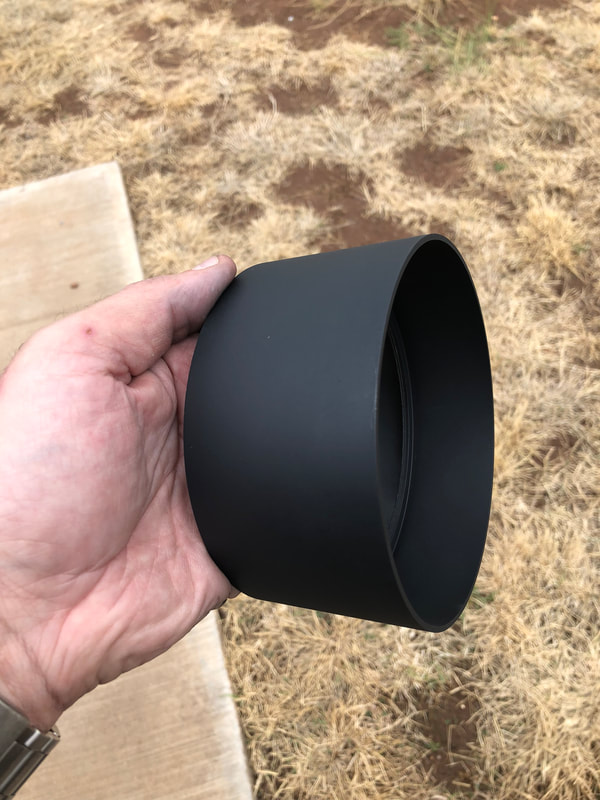
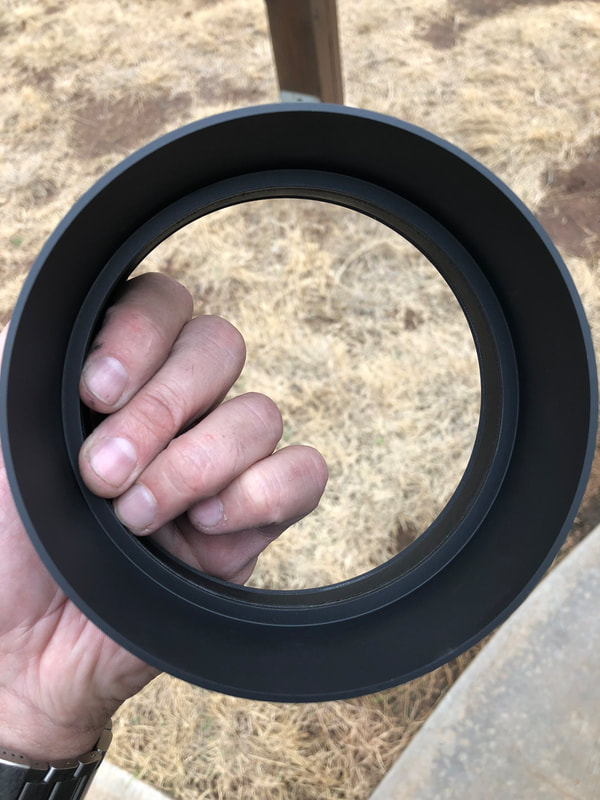
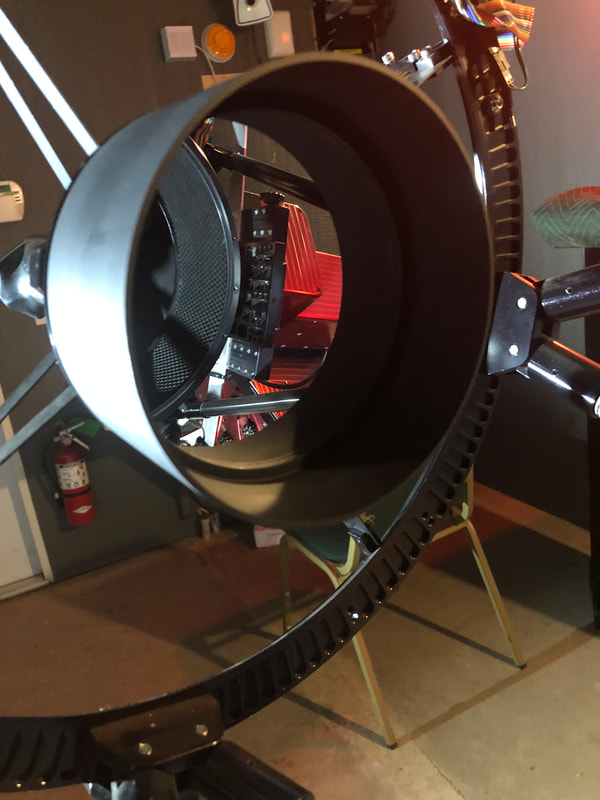
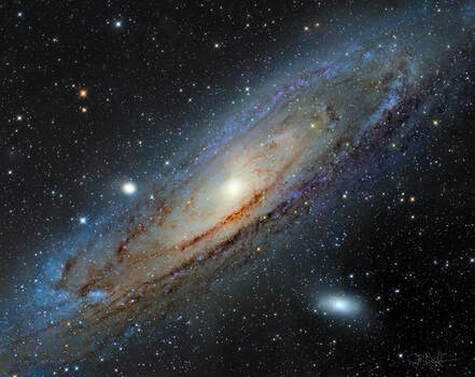

 RSS Feed
RSS Feed
